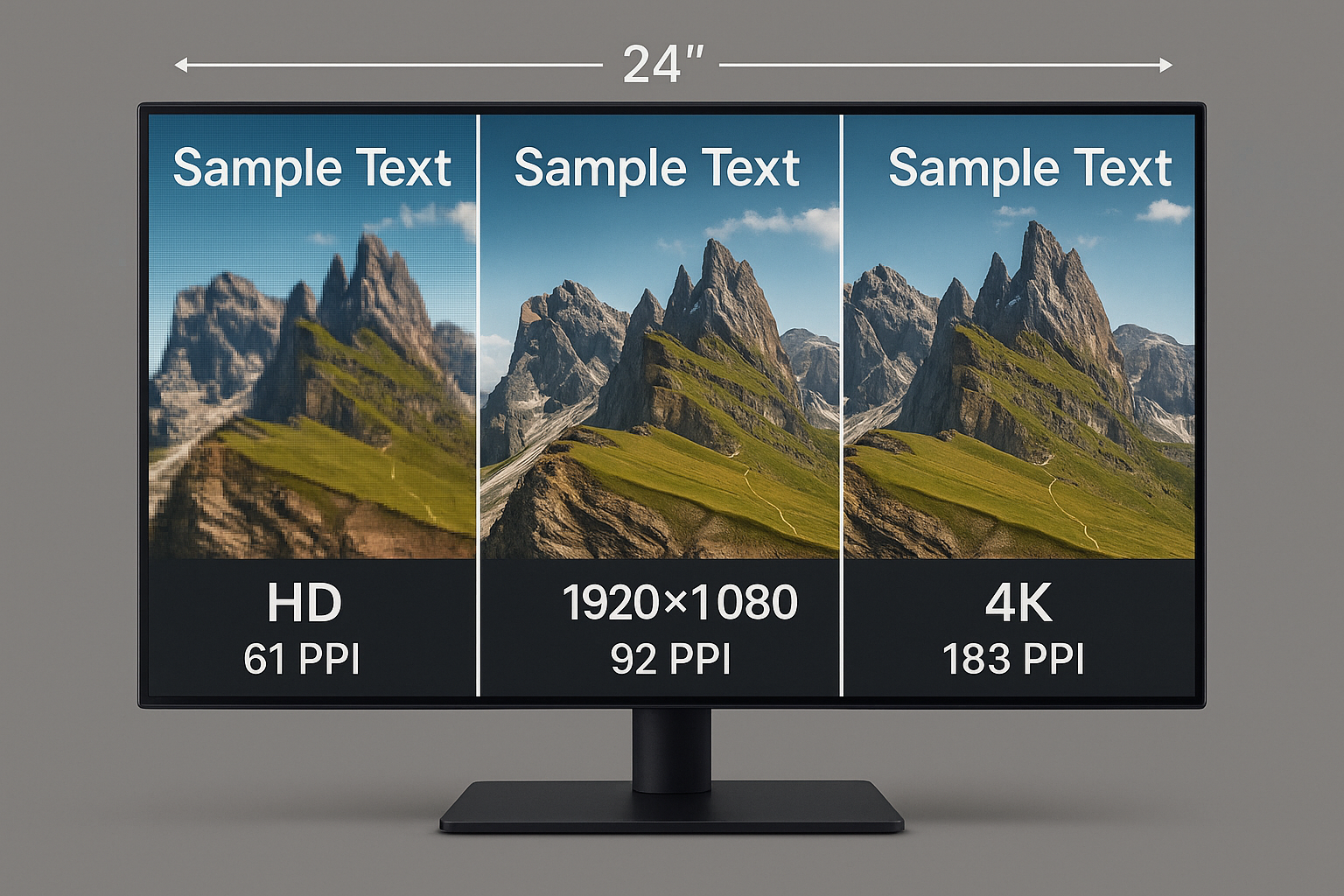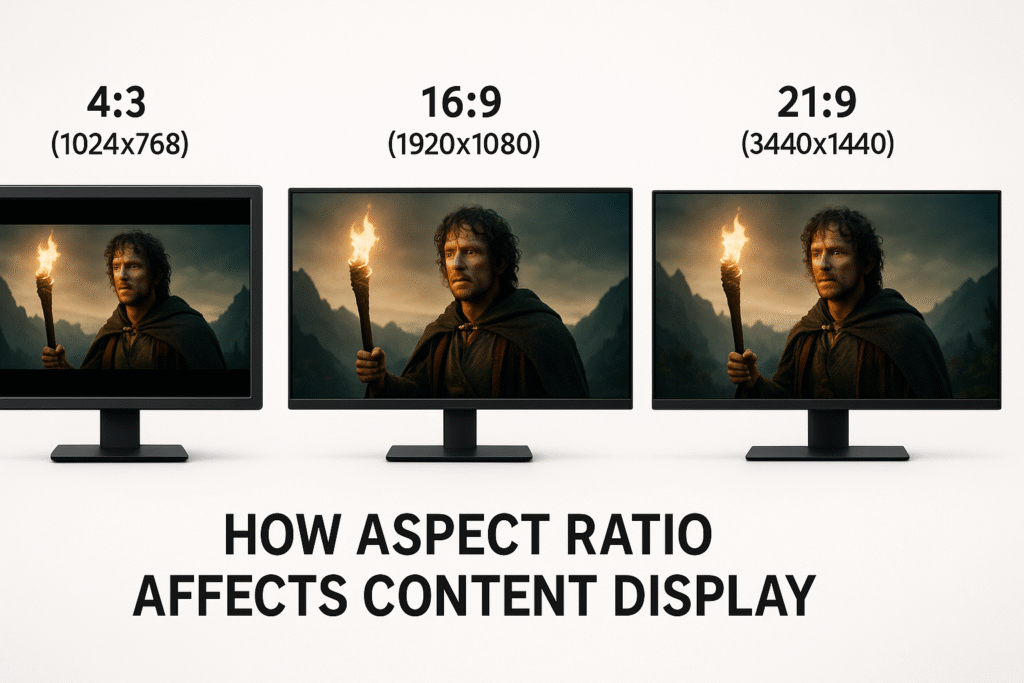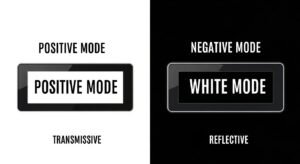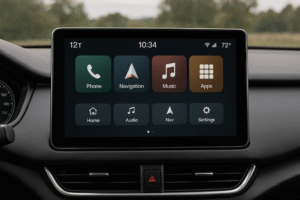
Many buyers struggle to pick the right resolution for an LCD display. The wrong choice means blurry images or wasted money. Here’s how resolution really affects your experience.
Resolution determines how sharp and detailed an image appears on a screen. Higher resolutions mean more pixels, so images and text look clearer and smoother, improving user experience and reducing eye strain.
When I started in the LCD module industry, I also wondered how much resolution truly matters. I quickly found that every detail—from aspect ratio to monitor size—can make or break the user’s satisfaction. Let’s break down what you need to know.
What Is LCD Resolution?

Many people ask what “resolution” means in the world of LCDs.
LCD resolution means the number of pixels displayed on the screen. For example, 1920×1080 means the screen shows 1920 pixels across and 1080 pixels down.
LCD displays have a grid of pixels. Each pixel shows a tiny part of the image. The more pixels on the screen, the more detailed the image looks. “Resolution” is often shown as width x height. Some common examples are:
| Name | Resolution | Aspect Ratio |
|---|---|---|
| HD | 1280×720 | 16:9 |
| FHD | 1920×1080 | 16:9 |
| QHD | 2560×1440 | 16:9 |
| 4K UHD | 3840×2160 | 16:9 |
| 8K UHD | 7680×4320 | 16:9 |
| WXGA | 1280×800 | 16:10 |
| WUXGA | 1920×1200 | 16:10 |
| 4:3 SD | 1024×768 | 4:3 |
Most modern displays use 16:9, but you might still see 4:3 or 16:10 in special use cases. Higher numbers mean more detail. “Native resolution” is the best resolution a display can show without quality loss.
- resolution definition: Number of horizontal and vertical pixels.
- define screen: Physical surface where images appear.
- screen resolution: The number of pixels in width and height.
How Do Aspect Ratio and Resolution Work Together?
Resolution and aspect ratio are linked, but not everyone knows how they fit.
Aspect ratio describes the shape of the screen, like 16:9 for widescreen. Resolution must match the aspect ratio for images to look right.
Aspect ratio is the width divided by the height. Common ratios include 16:9 (widescreen), 4:3 (almost square), and 21:9 (ultra-wide). For example, 1920×1080 is 16:9, while 1024×768 is 4:3. Matching the correct aspect ratio ensures the image is not stretched or squashed. Most media, like movies and games, use 16:9, but some industries or retro equipment still use 4:3 or 16:10. Here’s a quick look at popular ratios:
| Aspect Ratio | Example Resolution | Typical Use |
|---|---|---|
| 4:3 | 1024×768 | Older monitors, legacy |
| 16:9 | 1920×1080 | TVs, laptops, modern LCD |
| 16:10 | 1920×1200 | Professional monitors |
| 21:9 | 3440×1440 | Ultra-wide monitors |
If you use a 4:3 image on a 16:9 display, you get black bars or stretched content. Always check both resolution and aspect ratio before buying.
- aspect ratio: Width to height proportion.
- 16:9 aspect ratio: Widescreen standard.
- screen ratio: Another term for aspect ratio.
How Monitor Size Affects Resolution

Many buyers want bigger monitors, but size changes how you see resolution.
A larger monitor with the same resolution will show bigger, less sharp images. For sharper results, bigger screens need higher resolutions.
This is all about pixels per inch (PPI). If you have a 24-inch monitor at 1920×1080 (FHD), the PPI is higher than a 32-inch monitor at the same resolution. High PPI gives sharper images, great for detailed work. For office use, FHD might be enough up to 24 inches. For anything larger, 2560×1440 (QHD) or 3840×2160 (4K) is better. If PPI drops too low, text and images look pixelated. This is why professionals working with photos or video editing choose high-res displays.
PPI Comparison by Size and Resolution
| Monitor Size | 1920×1080 (FHD) | 2560×1440 (QHD) | 3840×2160 (4K UHD) |
|---|---|---|---|
| 21.5″ | 102 PPI | – | – |
| 24″ | 92 PPI | 122 PPI | 183 PPI |
| 27″ | 82 PPI | 108 PPI | 163 PPI |
| 32″ | 69 PPI | 92 PPI | 138 PPI |
Technical Factors Affecting Resolution
Display resolution is not just about pixel count.
Cables, graphics cards, and software all affect what resolution you actually see. The weakest link can limit your screen’s quality.
Even if you buy a 4K display, you need the right HDMI, DisplayPort, or USB-C cable and a graphics card that supports that resolution at the correct refresh rate. For example, HDMI 1.4 supports 4K only at 30Hz, but HDMI 2.0 and above support 4K at 60Hz. If your cable or port is old or low quality, your screen may default to a lower resolution or show a blurry image. The operating system and drivers must also support the display. Sometimes, you can only choose limited options due to driver or port limitations.
Software Scaling
Modern systems offer scaling settings, especially for 4K displays. Scaling makes text and icons easier to read, but poor scaling causes blurriness. Always check that the scaling works well for your apps.
Compatibility Issues
Old hardware or software may not support modern resolutions. Always match your monitor, cable, and device capabilities for the best results.
How Does Resolution Impact Sharpness and Clarity?
Sharp images and clear text depend directly on the resolution.
Higher resolution packs more pixels into the same space, so text and images look crisp, detailed, and smooth. Low resolution looks blocky or blurry.
The effect is especially visible in small fonts or high-detail photos. When I test displays, I always look at thin lines and small text—low resolution makes them jagged. High resolution gives you smoother curves, clear photos, and detailed graphics. For example, comparing 1920×1080 to 3840×2160 on the same 27-inch monitor, 4K looks much clearer. This is why designers, video editors, and engineers often choose high resolutions.
Resolution Impact on Sharpness
| Resolution | Screen Size | PPI | Clarity |
|---|---|---|---|
| 1280×720 | 24″ | 61 | Poor |
| 1920×1080 | 24″ | 92 | Good |
| 2560×1440 | 27″ | 108 | Very Good |
| 3840×2160 | 27″ | 163 | Excellent |
Which Resolution and Aspect Ratio Is Right for Different Use Cases?
Choosing the best setup depends on how you plan to use your monitor.
For movies and games, 16:9 and high resolutions are best. For office work, higher aspect ratios (16:10, 21:9) and higher PPI help productivity.
If you watch videos, 16:9 matches most content. Gamers enjoy 16:9 or 21:9 for immersive play. For spreadsheets or code, 16:10 or ultra-wide 21:9 lets you see more lines at once. In factories or with legacy software, 4:3 may be required. High PPI (100+ pixels per inch) is ideal for editing photos. Remember, higher resolution uses more computer power, so match your system specs(What Exactly Are DPI and PPI, and Why Do They Derail Design Projects?).
Common Resolutions by Use Case
| Use Case | Recommended Resolution | Aspect Ratio |
|---|---|---|
| Office Work | 1920×1200, 2560×1440 | 16:10, 16:9 |
| Gaming | 2560×1440, 3840×2160 | 16:9, 21:9 |
| Video Editing | 3840×2160, 4096×2160 | 16:9, 17:9 |
| Industrial | 1024×768, 1280×1024 | 4:3, 5:4 |
Optimizing Resolution for Specific Use Cases
Each industry or application benefits from the right balance of resolution and aspect ratio.
Customizing resolution and aspect ratio to your needs ensures the best visual results, whether for office, gaming, or industrial use.
In my projects, I’ve seen that assembly factories often need displays that match old equipment, so the resolution must be compatible. For new designs, I recommend FHD (1920×1080) or QHD (2560×1440) for general use, and 4K for demanding graphics. Gamers or media creators should check both monitor and GPU specs. In some medical or industrial systems, 4:3 or even custom aspect ratios matter more than pixel count because of space or system limits. Always balance the cost and system requirements.
How to Optimize
- Choose native resolution when possible
- Match resolution to use case
- Use proper cables and updated drivers
- Test scaling in your OS
What Should You Consider When Choosing an LCD Display?
The right display makes work easier and images clearer.
Consider resolution, aspect ratio, screen size, pixel density, cable compatibility, and your specific use case before buying an LCD display.
Make sure the screen resolution matches your needs. For typical office work, FHD may be enough, but QHD or 4K is better for creative tasks. Aspect ratio should fit the main activity—16:9 for general use, 16:10 for documents, 21:9 for multitasking. Bigger is not always better if the pixel density is too low. Don’t forget to check if your cables and graphics card can support the screen’s full resolution. Finally, try to use the monitor at its native resolution for the best picture.
Buying an LCD Display
| Feature | Why It Matters |
|---|---|
| Native Resolution | Sharpest possible image |
| Aspect Ratio | Proper fit for content |
| Screen Size | Viewing comfort |
| Pixel Density (PPI) | Text and image clarity |
| Cable Compatibility | Full support for resolution & refresh |
| Graphics Card | Drives display at high resolution |
| OS Scaling | User interface comfort |
Conclusion
Resolution shapes image quality and user experience. Choose the right resolution, aspect ratio, and size for your needs to ensure sharp, clear visuals.
FAQ
What does resolution mean in simple terms?
Resolution means how many tiny dots, called pixels, make up your screen’s image, determining its detail and sharpness.
Is higher resolution always better for image quality?
Generally, yes, higher resolution means more detail and sharpness, but it also depends on screen size and viewing distance.
What is native resolution, and why is it important?
Native resolution is the maximum fixed pixel count of a display, and it is crucial because using it ensures the clearest and sharpest image without scaling issues.
How does aspect ratio affect what I see on my screen?
Aspect ratio defines the shape of your screen (e.g., wide or square), influencing how content fits and appears, preventing black bars or stretched images.
What are common resolutions for computer monitors?
Common resolutions include 1920×1080 (Full HD), 2560×1440 (Quad HD), and 3840×2160 (4K Ultra HD), with 1080p being widely used and 4K offering much greater detail.







